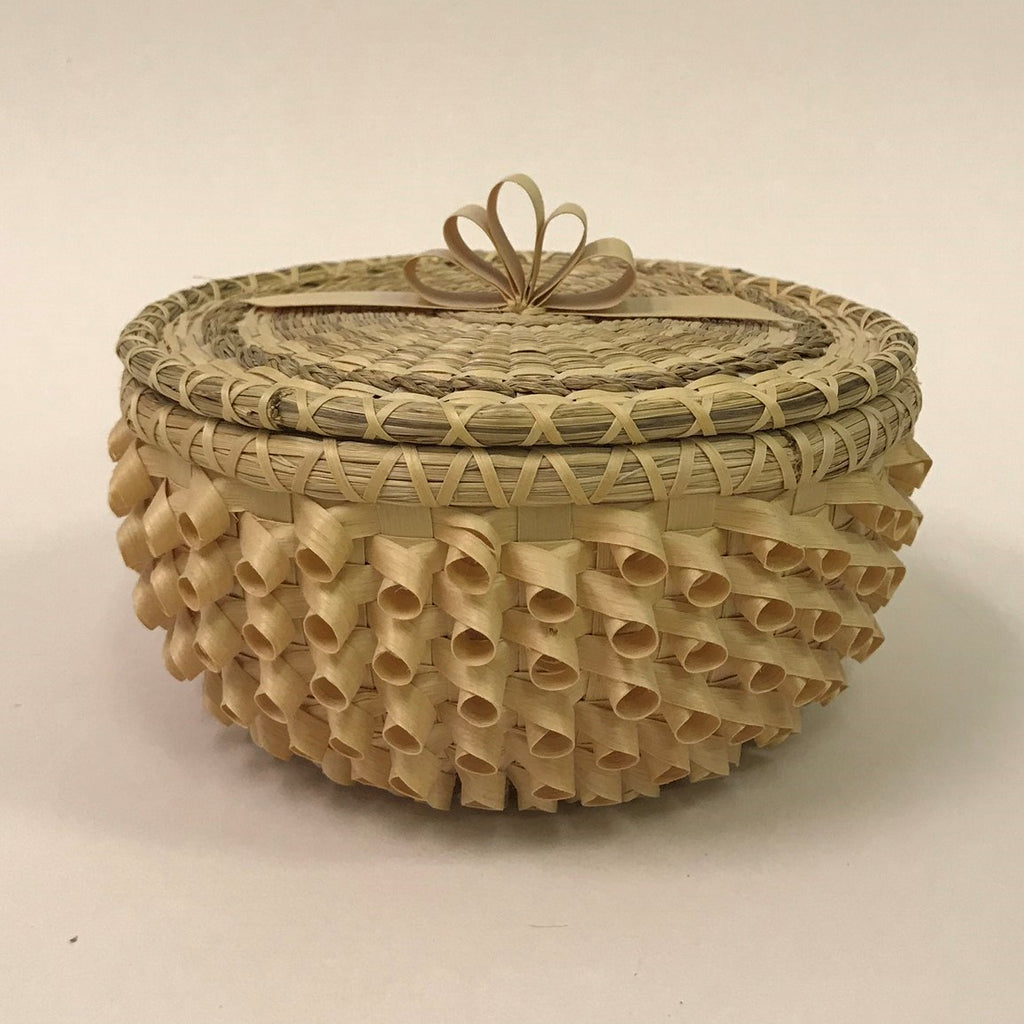-
Akwesasne Mohawk Baskets
Akwesasne Mohawk Baskets by renowned basket maker, MAE BIGTREE Akwesasne (Mohawk) is known for its intricate and innovative techniques of black ash splint and sweet grass baskets. Local basket makers and community members at large have a deep respect for the natural materials of basketry. Ash logs and sweetgrass are harvested by men and women who turn them into basketmaking materials in processes that... -
American Indian Beadwork
A Little History: Glass beads were traded for thousands of years in early civilizations worldwide. In addition to glass bead trading, ancient American Indians also traded beads made of antler, bone, copper, shell, clay, stone and othermaterials. The ancient American Indian beads were typically large in size and used for self-adornment in necklaces, earrings or clothing. In the northern homelands of the porcupine, American Indians... -
Sandcast Jewelry
The Sandcast Jewelry Method: Sandcast Native American is a style of Navajo jewelry was first created by silversmiths sometime between 1840 and 1860. The basis of this process is a mold made by carving the desired design into a stone. Using this mold, a piece of jewelry is made (belt buckle, bracelet, ring, etc.) and becomes the "master sample" from which the subsequent sandcast... -
Drums
The Spirit of the Drum: All life is rhythmic. We see it in the coming and going of day and night, the ebb and flow of tides and the beating of the human heart. Little wonder that throughout the history of mankind, people from all over the world have prized drums – the instruments of rhythm. Perhaps no other people have attached a greater... -
Fred Harvey Jewelry
Fred Harvey Native American jewelry is a hot collectible! Railroad era entrepreneur Fred Harvey may be best known for the Harvey House chain of hotels and restaurants he strung along the tracks from Topeka, Kansas, across the Southwest, to Bakersfield, California. However, Harvey was also an innovative marketer who introduced travelers to inexpensive Native American-made souvenirs through his many curio shops, especially those in... -
Zuni Fetish
The Zuni Fetish: Webster's Dictionary defines a fetish as "any object believed to have magical power." A Zuni fetish is an object, most often carved, which usually represents an animal or Being revered by the Zuni Indians of New Mexico, whose word for fetish is wemawe (wuh-may-wuh). Fetishes have been carved for personal use for ages. An outgrowth of this aspect of Zuni culture... -
Native American Baskets
The Language of Native American Baskets: From the Weaver's View by Bruce Bernstein: "He was sitting by his campfire, listening to the star echoes. His burden basket rested upright against a pine. The voices inside the basket got pretty loud and disturbed Coyote. He stuck his head inside the basket and said, 'You people be more quiet or I'm going to dump you out... -
Santo Domingo Depression “Era” Thunderbird Necklaces
Santo Domingo Pueblo is one of the largest of the Pueblo villages. It is located along the Rio Grande River, halfway between Albuquerque and Santa Fe. The people there have long been known for their lapidary and shell jewelry. Between the 1930’s through the 1950’s, New Mexico Pueblo Indians were severely affected by the depression. At this time a type of necklace was made... -
National Museum of the American Indian
The National Museum of the American Indian is part of the Smithsonian Institution and is dedicated to the life, languages, literature, history, and arts of the Native Americans of the Western Hemisphere. It has three facilities: the National Museum of the American Indian on the National Mall in Washington, D.C., which opened on September 21, 2004, on Fourth Street and Independence Avenue, Southwest; the George Gustav Heye Center, a permanent museum in New York City; and... -
Navajo Wedding Basket
The NAVAJO CEREMONIAL BASKET also called NAVAJO WEDDING BASKET is viewed as a map through which the Navajo chart their lives. The central spot in the basket represents the sipapu, where the Navajo people emerged from the prior world through a reed. The inner coils of the basket are white to represent birth. As you travel outward on the coils you begin to encounter...
Customer Service 630.269.8080 / Products Ship Directly from the Gallery

